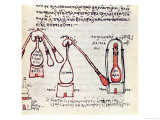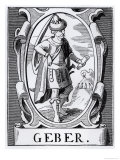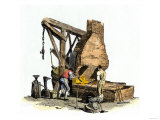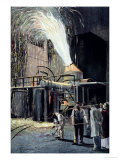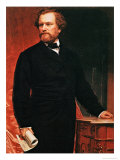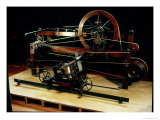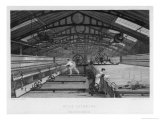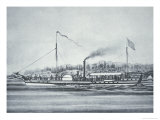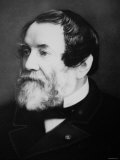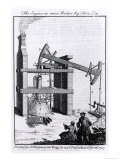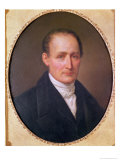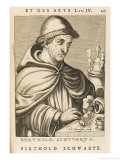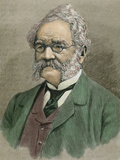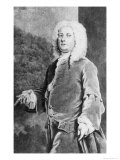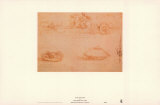|
|
|
|
|
|
|
|
|
|
|
|
BOOKS ABOUT
INVENTIONS & TECHNOLOGY
|
|
|
|
|
|
|
|
|
|
|
|
|
|
|
|
|
|
|
|
|
|
 |
|
|
|
Inventions, Inventors, Machines & Tools Posters & Art Prints
for the social studies and science classroom, home schoolers and theme decor for office and studio.
|
history > INVENTIONS, MACHINES & TOOLS < social studies
|
|
The Agricultural and Industrial Revolutions were marked by the invention of mechanical labor saving devices that affected the production of textiles in factories instead of family cottage industy, advanced techniques of metal working, farm implements, and the use of coal. Every facet of culture and the economy (flow of resources) were affected by the more efficient and less labor intensive production of goods which entrenched a market economy capitalism.
|
inventions 1 | 2 | Machine Trades | vocational education
Heroes of Science & Technology | Technologies Past | Black Innovators
|
|
The invention of ameblics, the distillation apparatus for the separation of mixtures based on differences in their volatilities when boiled, is attributed to Abu Musa Jabir ibn Hayyan. Born in present day Iran, and known as Geber in the Middle Ages, he was an alchemist noted for his experimental work which lead to modern chemistry. Geber was also a philosopher and astronomer.
Geber quote:
• “The first essential in chemistry is that you should perform practical work and conduct experiments, for he who performs not practical work nor makes experiments will never attain the least degree of mastery.”
• The Alchemical Works of Geber
|
|
|
|
Metallurgy is the study and technology of exploiting the characteristics of elements that are hard, solid at room temperature, lusterous (shiny), ductile and malleable (can be bent and formed into shapes), and conduct electricity, heat and sound efficiently.
A factory for producing metal into casting for further processing is called a foundry.
The Bessemer process, developed by Sir Henry Bessemer, was the first economical industrial scale process for the mass producing steel which has become a common material and a major component in buildings, tools, automobiles, and appliances.
Valley Forge, famous as a winter encampment for the Continental Army, was the site of a a foundry, and the Pine Barrens of New Jersey was a source of bog iron that was made into cannonballs.
• Out of the Fiery Furnace: The Impact of Metals on the History of Mankind
|
|
|
|
Sir Richard Arkwright
b. 1-3-1733; England
d. 8-2-1792
Arkwright was generally credited with inventing the spinning frame, a vast improvement on the spinning jenny of James Hargreaves. Though his patents were eventually revoked, because it was shown he had infringed on the original work of others, he was knighted for his considerable achievements of fueling the Industrial Revolution in England.
|
|
|
|
Samuel Colt
b. 7-19-1814; Hartford, CT
d. 1-10-1862; Hartford
Industrialist and inventor Samuel Colt was granted a patent for a revolver mechanism on February 25, 1836; he also pioneered interchangeable parts with the goal of having an assembly line for production. Colt's work made a repeating firearm widely available, relatively inexpensive, and reliable.
Colt: The Making of an American Legend
BTW - Samuel Colt and Samuel Morse, were both friends and business collaborators.
|
|
|
|
Samuel Crompton
b. 12-3-1753; England
d. 6-26-1827
Crompton, who earned his living as a spinner, made improvements to Hargreaves' spinning jenny, calling it a spinning mule.
In this illustration of the interior of a Lancaster cotton factory with spinning mules, a child cleans the inside of a moving machine. The Luddites destroyed machines like these that eliminated jobs for skilled textile workers.
|
|
|
|
Robert Fulton
b. 11-14-1765; Lancaster Co. PA
d. 2-24-1815
Robert Fulton was an artist and mechanical genius most remembered as the engineer credited with developing the first commercially successful steam-powered boat, the Clermont (named after the home of Robert R. Livingston), which carried passengers on the Hudson River between New York City and Albany, New York, beginning in 1807. The steamboat cut the week long trip by sloop to 60 hours.
Fulton also developed the first practical submarine, commissioned by Napoleon Bonaparte in 1800.
• Robert Fulton: From Submarine to Steamboat
|
|
|
|
James Hargreaves
b. c. 1720; England
d. 4-22-1778
James Hargreaves, a weaver and carpenter, is credited with inventing the Spinning Jenny in 1764 which revolutionized the textile industry. Hargreaves, seeing that several “spinsters” spinning raw fiber on a spinning wheel were unable to produce enough thread for a weaver to work efficiently, “framed” several spindles together allowing them to be powered by one person, thus multiplying the output of a single spinster by the number of spindles.
|
|
|
|
Cyrus McCormick
b. 2-15-1809; Rockbridge Co., VA
d. 5-13-1884; Chicago
Inventor of a mechanical harvester, Cyrus McCormick was the founder of the McCormick Harvesting Machine Company.
The reaper was a tremendous labor saving device for farmers by using animals to pull a machine that could cut and gather grain in one process.
|
|
|
|
|
|
|
|
Thomas Newcomen
b. 2-24-1664; Dartmouth, Devon, England
d. 8-5-1729
Ironmonger (someone who sells iron goods) Thomas Newcomen, considered a forefather to the Industrial Revolution, perfected a practical steam engine for pumping water out of the tin mines in southwest England (tin and copper are combined to make bronze). Inventor James Watts developed the technological improvements to Newcomen's “Engine to Raise Water by Fire” and thus made the external combustion steam engine fuel efficient.
|
|
|
|
Nicephore Niepce, née Joseph
b. 3-7-1765; Chalon-sur-Saône, Saône-et-Loire, France
d. 7-5-1833
Physicist Nicephore Niepce is considered to have taken the first known photograph in 1825.
He and his brother Claude also invented the world's first internal combustion engine for which they received at patent in 1807 from Napoleon Bonaparte.
• The Camera: Inventions That Shaped the World
|
|
|
|
|
|
|
|
|
|
Werner von Siemens
b. 12-13-1816; Lenthe, Kingdom of Hanover, Germany
d. 12-6-1892; Berlin
Inventor and industrialist Werner von Siemens was the founder of the electrical and telecommunications company Siemens. The Siemens' name has been adopted as the SI (Internationals System of Units) unit of electrical conductance, the siemens.
|
|
|
|
Henry Jethro William Tull
b. 3-30-1674; Berkshire
d. 2-21-1741; Hungerford
Jethro Tull, an English agricultural pioneer and proponent of a scientific / empirical approach to farming, helped transform agricultural practices by inventing or improving implements.
While Tull is most associated with improving the seed drill which allowed seeds to be spread evenly in spacing and depth by just one person and a team of horses. Tull was most interested in soil preparation.
• Discovering Horse Drawn Farm Machinery
|
|
|
|
|
|
|
|
|
|
|
|
|
I have searched the web for visual, text, and manipulative curriculum support materials - teaching posters, art prints, maps, charts, calendars, books and educational toys featuring famous people, places and events - to help teachers optimize their valuable time and budget.
Browsing the subject areas at NetPosterWorks.com is a learning experience where educators can plan context rich environments while comparing prices, special discounts, framing options and shipping from educational resources.
Thank you for starting your search for inspirational, motivational, and educational posters and learning materials at NetPosterWorks.com. If you need help please contact us.
|
|
|











